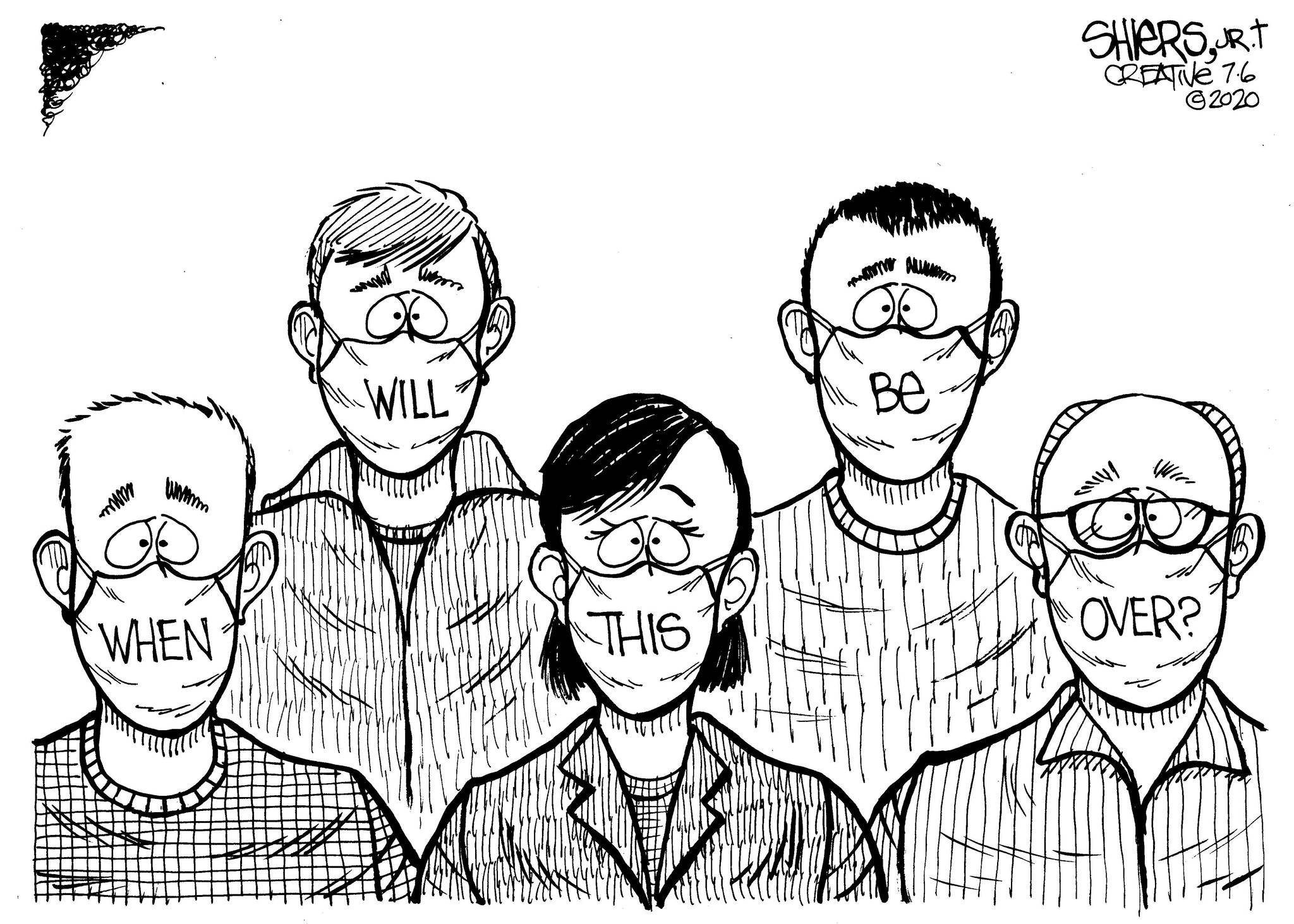There was a time when the phrase “back to school” led mostly to parents’ thoughts of shopping trips for deals on clothes and class supplies and — for kids, at least — a melancholy countdown of the last days of summer vacation.
With the approach of autumn, children might be feeling as much eagerness as their parents for a return to the classroom especially after the last months of spring ended with students being sent home in an effort to contain the coronavirus pandemic, finishing out the school year with online tutoring and parents as ad-hoc educators. For many kids and parents, the experience provided a new appreciation for the work of teachers and an eagerness to return to school, proper.
But as COVID-19 infections continue their rise in several states — with 3 million total U.S. cases and more than 130,000 U.S. deaths and an estimated 166,000 deaths by Sept. 1 — the nation’s inability to limit the spread of the disease has muted that anticipation, with one significant exception.
Earlier this month, President Trump demanded that schools reopen fully and in-person this fall or risk the loss of federal funding, rejecting any proposals by states and school districts to use online learning for even part of the school week. That demand fails to recognize the differences among states in rates of infection and the flexibility that schools require to serve their students effectively and safely.
Most taxpayers, especially those paying property taxes, already are well aware that state and school district taxpayers provide about 90 percent of the funding for public schools. The remaining 10 percent of federal funding — largely used to improve services for low-income children and those with special needs — is appropriated by Congress.
Likewise, the nation must continue discussions on how best to resume the education of students this fall while protecting the health and lives of students, families, teachers and school staff. While children are typically less endangered by COVID infections, they can transmit the disease to adults in school and parents and other family members at home.
The best place for most children to learn is the classroom. The classroom is where teachers have the resources, training and experience to optimally work with students and where students have the best opportunities for socialization and development of interpersonal skills. Many students rely on services at schools for nutrition, physical activity and connection with trained professionals regarding emotional health and learning disabilities. For those and other reasons, the American Association of Pediatrics has strongly advocated that schools work toward the goal of having students physically present in school for the coming school year.
And that is the goal being set by the state and local school districts. State Superintendent of Public Instruction Chris Reykdal in June issued guidelines for school districts with the intention of reopening in the fall for in-person instruction. That hope is echoed by school districts.
To do so will require investments that protect the health and safety of all who enter school buildings. The OSPI guidelines spell out what districts will need to do regarding monitoring those who enter buildings for COVID symptoms; physical distancing and mask-wearing in classrooms and elsewhere; how and where students will eat breakfast and lunch; hygiene and sanitizing standards; and recommendations for bus transportation and getting to and from school.
And these closely mirror the guidelines that the Centers for Disease Control and Prevention have recommended to schools.
Those precautions won’t come cheap. A national school superintendents association estimates that such precautions will cost about $1.8 million for an “average-size” school district of 3,700 students.
School districts and the state will, of course, make those investments; because they must, but they likely will have to look to reduce funding elsewhere.
Rather than threatening to pull funding, President Trump and other federal leaders should be working with Congress to provide greater federal funding to allow schools to reopen and do so safely.
Two months ago, the U.S. House passed the HEROES Act which would have allocated $90 billion in Department of Education grants to support K-12 and higher education; most of that funding — $58 billion — would go to states and local school districts; another $1 billion would be provided to state and local governments to make up for lost tax revenue, hoping to head off cuts to public education. But the HEROES Act has seen no debate in the Senate, and Senate Majority Leader Mitch McConnell, R-Ky., has been noncommittal about additional aid to school districts and state and local governments.
As well, the nation’s economic recovery could also be helped by better access to child care, which would ensure more parents can return to work. U.S. Sen. Patty Murray, D-Washington, and others in the Senate and House have proposed an extension of the block-grant funding first provided in the CARES Act. The Child Care is Essential Act would add $50 billion in funding, helping to reopen and support child-care facilities and provide tuition aid to working families. It, too, has been ignored in the Senate.
The final decision as to whether students return full-time to classrooms will be left to parents. Even knowing that it could mean a return to in-home instruction this fall, parents will decide when it’s safe to send their kids back to school.
By The Herald (Everett) editorial board.


